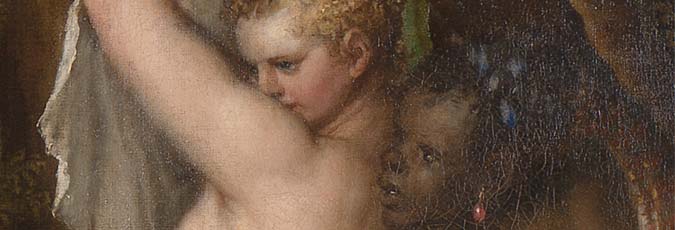Permanent art galleries
Having seen how members of the Duke of Bridgewater’s family assisted in the creation of several of the most influential but temporary exhibiting bodies in the early to mid-19th century, it seems appropriate to conclude this survey with an acknowledgement of their role in the foundation of 'permanent 'art galleries, which was the natural end-result of the new interest in the display of art both in private homes open to the public and in temporary public exhibitions. Indeed, the British Institution is properly seen as the real parent of the National Gallery. Although the British Institution had no truly permanent display it bought paintings for the proposed ‘future National Gallery’ (including Veronese’s The Consecration of Saint Nicholas (NG 26) and Parmigianino’s huge altarpiece of The Madonna and Child with Saints (NG 33)). Given Stafford’s links with the British Institution, he would have been viewed as a kind of godfather figure to the new institution when it emerged and thus virtually expected to make a magnificent present to it.
Bearing this in mind, it is not so surprising then, that when the National Gallery was founded in 1824, the Marquis of Stafford was among its first benefactors, donating Rubens’s War and Peace in 1828 (NG 46). A decade later, his son, the future Earl of Ellesmere, presented two large cartoons by Agostino in 1837: Cephalus carried off by Aurora in her Chariot and A Woman borne off by a Sea God(?) (NG 147-8).46 Furthermore, the Earl of Ellesmere served as a Trustee of the National Gallery, London, for 20 years from 1835, going on to fulfil a similar function at the adjacent National Portrait Gallery for a year or so in 1856.47
Bringing the story of the association of Titian’s Diana and Actaeon with the National Gallery of London up-to-date two events should be signalled. First, in 1916, the outbreak of the First World War and concomitant economic crash led to a threat of sale of the Sutherland Egerton Titians. In particular the two Diana pictures came under review and the dealer Duveen attempted to sell them to the American industrialist Henry Clay Frick.
The National Gallery was keen to avert any possible export of this pair of national treasures and so even considered selling off some of its less important pictures to raise money to buy the Titians. However, the Trustees did not pursue this complex matter on realizing that the asking price of £300,000 was way beyond its means. In the event the pictures remained with the Sutherland family, and in fact a selection of roughly a dozen Bridgewater House pictures were displayed at the National Gallery in 1917 when Bridgewater House was commandeered for Government use (but the Titian 'Diana and Acataeon' did not feature among the choice).48
The paintings remained on display in Bridgewater House until 1939, when they were motored to Scotland for safekeeping, including the Diana Titians.49 However, some pictures remained behind. 50 Bridgewater House was bombed at the height of the Blitz on 11 May 1941 in which the remaining pictures were damaged or destroyed.51 The notion of moving the saved Bridgewater pictures again, this time from Scotland to the Manod quarries in Wales to join the other National Gallery pictures already stored there, never came to pass because peace was declared very soon afterwards.52 The ruined Bridgewater House was sold in 1943 and some of its pictures were auctioned off in 1946.53
The year before John Sutherland Egerton, 5th Earl of Ellesmere (who became the 6th Duke of Sutherland in 1963) had returned to the UK, having been a prisoner of war in Germany from 1940 to early 1945. He moved to Scotland and immediately loaned the Titian Dianas and other works (notably Poussin’s series of the Sacraments and Raphael’s 'Bridgewater Madonna') to the National Gallery in Edinburgh. It is gratifying that the connection of Titian’s 'Diana and Actaeon' with the National Gallery in London and its sister institution in Edinburgh has been secured in perpetuity thanks to the negotiations of the present 7th Duke of Sutherland with both institutions, which culminated in the joint purchase of the masterpiece by the national galleries of England and Scotland for £50 million in early 2009.

